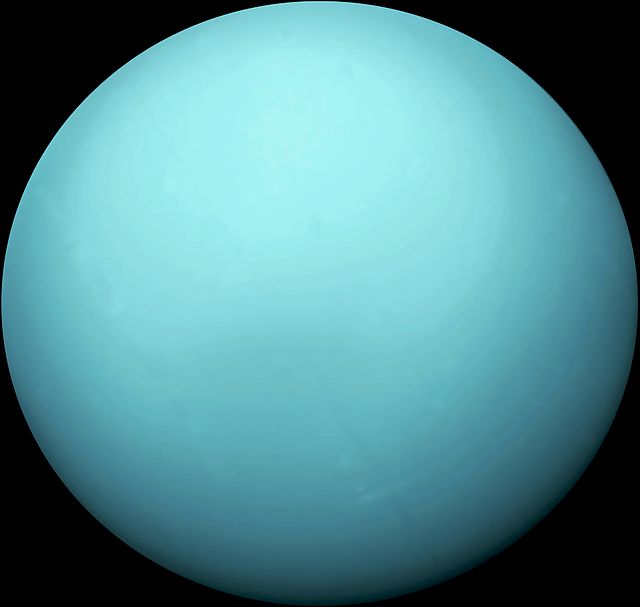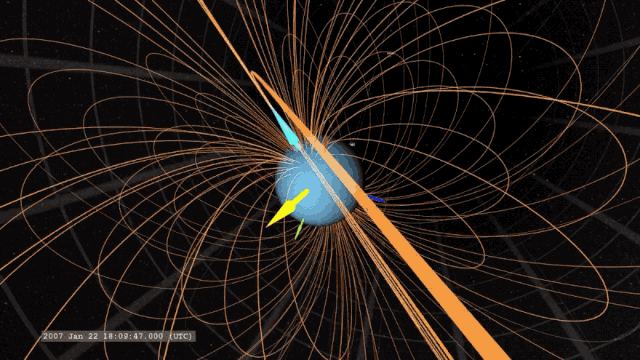 Uranus, the god of the sky, detested his children and alienated his wife, Gaia. He was overthrown and castrated by his son Kronos (who would shortly learn about the cyclical nature of history.) In the poem Theogony, Hesiod describes that Uranus emerged from Gaia, who was one of the first four spontaneous beings in existence.
Uranus, the god of the sky, detested his children and alienated his wife, Gaia. He was overthrown and castrated by his son Kronos (who would shortly learn about the cyclical nature of history.) In the poem Theogony, Hesiod describes that Uranus emerged from Gaia, who was one of the first four spontaneous beings in existence.
“The stories of the Titans are about gods who belong to such a distant past that we know them only from tales of a particular kind, and only as exercising a particular function,” wrote the Hungarian scholar and classicist Károly Kerényi, who helped to revive the modern study of Greek legends, in his 1951 book Gods of the Greeks.
No cult of Uranus appears to have survived into Classical Antiquity and he is not represented in Greek painted pottery. “We did not regard them as being in any way worthy of worship with the single exception, perhaps, of Kronos,” wrote Kerényi.
The god, of course, famously lent his name to the planet observed by William Herschel on March 13, 1781. Contrary to common comments about the planet, it is visible to the naked eye under dark skies. But Herschel confirmed the object in the sky as a planet and not another celestial phenomenon like a comet or star.
Uranus is the first (and now only) planet in the solar system to be named after a Greek deity, but consensus on the name took nearly 70 years to arrive. The German astronomer Johann Elert Bode proposed “Uranus” in 1782, when he noted that just as Jupiter was followed by his father, Saturn, so Saturn would be followed by his father, Uranus. Never mind that the planets were named Jupiter and Saturn instead of Zeus and Kronos – the Greek name Uranus stuck, as opposed to his Roman counterpart, the primal god Caelus.

Uranus photo taken by the spacecraft Voyager 2 in 1986. [NASA/JPL/Voyager mission (edited by Orange-kun) Public Domain]
In Eastern cultures like Chinese, Japanese, and Korean, its name is literally translated as the “sky king star” (天王星). In Mongolian, the planet is called “King of the Sky.”
In astrological practice, Uranus is often understood as an awakener, leading to sudden change and even innovation. It moves slowly through the Zodiac because of its distance from Earth. This summer on July 31 at 3:04 p.m. Eastern, Uranus will transit the North Node (the intersections of the Moon’s orbit with the solar ellipse) and continue its move through Taurus until 2026.
As a planet, milky-blue Uranus is also quite usual in the solar system. In 2033, Uranus will have made only its third complete journey around the Sun since its discovery. Its orbit is 84 years long, and takes place about 20 times further from the Sun than the Earth’s.
Uranus is also spinning on its side. Its axial tile is over 90 degrees from its plane of orbit. At some point in its past, the planet collided with an Earth-sized body. That collision resulted in the tilt we see today. Unlike other planets, during its solstices, one pole faces directly at the sun, while the other faces into deep space. It’s only during Uranus’s equinoxes that it has anything like a typical day-night cycle as seen on the other planets.

An animated GIF showing Uranus’ magnetic field. The yellow arrow points to the Sun, the light blue arrow marks Uranus’ magnetic axis, and the dark blue arrow marks Uranus’ rotation axis. NASA/Scientific Visualization Studio/Tom Bridgman [public domain]
Uranus also has 27 known moons, including Miranda, a moon that is less than 300 miles in diameter. It also has a complex magnetic field, over a dozen rings, and the ability to spawn countless but reliable jokes.
Indeed, Uranus has been somewhat ignored, as planets go, and needs more attention. NASA is aware it is behind and that will be changing the situation very soon.
The National Academies of Science released a public briefing on April 19th of its Planetary Science and Astrobiology Decadal Survey 2023-2032, where it acknowledged that scientists know very little about Uranus. Previous surveys have highlighted the Mars mission and the Europa Clipper spacecraft, which is scheduled to launch in 2024 to conduct detailed reconnaissance of Jupiter’s moon Europa and investigate whether the icy moon could have conditions suitable for life.
A proposed $4.2 billion mission, called the Uranus Orbiter and Probe, would place a satellite in the planet’s orbit and sample its atmosphere for many years. It was first proposed in 2011 and is now presented again. Its plan is similar to the famous and very successful Cassini mission of the Saturn system that ended in 2017. The orbiter will take detailed pictures of Uranus and the probe will sniff its atmosphere to take detailed measurements.
“I think we’re going to see some real extraordinary surprises there and learn a tremendous amount about planet formation in general, and we may discover some new ocean worlds,” says Cornell University’s Jonathan Lunine, who chaired the steering group’s report.
Uranus deserves this attention because scientists suspect that it and Neptune represent the most common type of planet, ice giants, which became the key to the mission prioritization. But there are many open questions about Uranus, including when its famous tilt occurred, how it managed to keep its moons despite the collision, and why it is mysteriously colder than Neptune, even though the latter is further out in the solar system.

This is a composite image of Uranus by Voyager 2 and two different observations made by Hubble — one for the ring and one for the aurorae. [ESA/Hubble & NASA, L. Lamy CCA 4.0]
The Voyager 2 mission gathered some data about Uranus as the spacecraft flew by in 1986 and it remains the only spacecraft to have visited the planet. But since then, Earth-based observations and images from the Hubble Space Telescope have identified eruptions of orange and red-colored clouds and stunning auroras that are the most intense observed in the solar system. More moons have also been spotted.
If successfully funded, the mission could launch as early as 2031 to take advantage of the favorable alignment of planets. That window will last until 2038. Even still, the fastest journey for the spacecraft will be 13 years, so in many ways, this mission is to collect data for future scientists.
It may be many years before we can feel, as Keats wrote in “On First Looking into Chapman’s Homer,” as “some watcher of the skies/When a new planet swims into his ken.”
The Wild Hunt is not responsible for links to external content.
To join a conversation on this post:
Visit our The Wild Hunt subreddit! Point your favorite browser to https://www.reddit.com/r/The_Wild_Hunt_News/, then click “JOIN”. Make sure to click the bell, too, to be notified of new articles posted to our subreddit.
